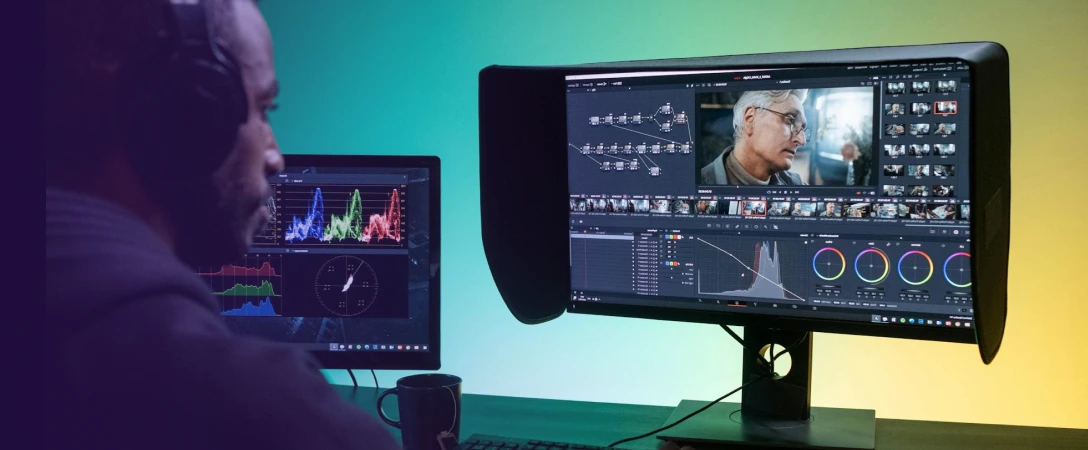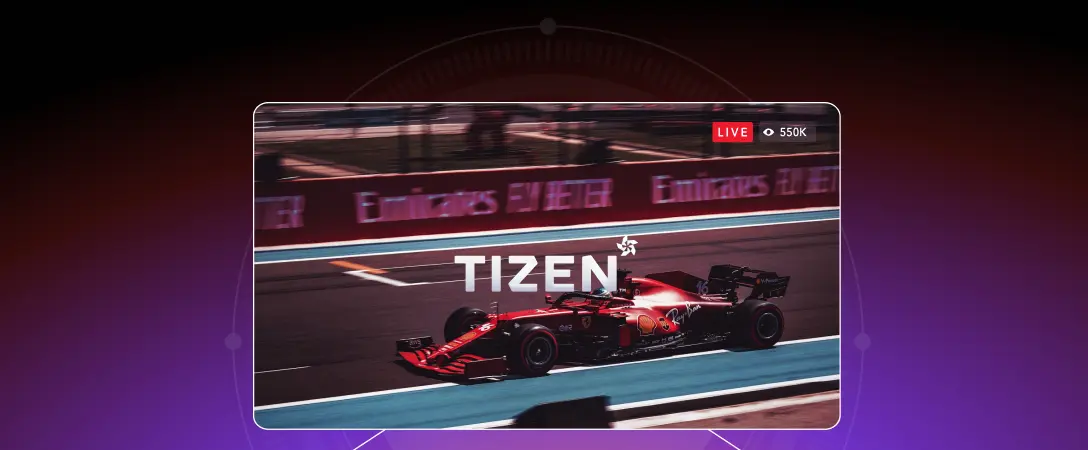Choosing the best video codec for your streaming setup is crucial to creating a high-quality experience for your audience. With so many codec options available, this can be a bit daunting.
AV1 and HEVC are two popular streaming codecs. Since AV1 was released in 2018, there’s been some buzz around whether or not it would replace HEVC. However, it’s been over seven years, and the two are still widely used.
In this article, we will compare HEVC and AV1. We will highlight both codecs and compare them from perspectives that matter to broadcasters. Our goal is to help you determine which makes the most sense for your unique needs.
As we go through this guide, remember that neither codec is inherently better. Which you choose depends on your unique streaming goals and the tools in your tech stack.
What is HEVC?
High Efficiency Video Coding (HEVC), or H.265, is the successor to the popular AVC codec (H.264). These codecs were developed by the MPEG and VCEG groups, which are also responsible for numerous other standards, including DASH, MP4, and MPEG2.
HEVC was designed to improve video quality without requiring increased bitrates.
What is AV1?
AOMedia Video 1 (AV1) was developed as a successor to Google’s VP9 codec, which failed to gain widespread adoption. It builds on the technology of VP9, AVC, and HEVC.
Google initially pioneered this codec but quickly joined forces with the Alliance for Open Media (AOM) to make it open source and royalty-free. Many global companies, such as Adobe, Amazon, Apple, Google, Facebook, Cisco, Mozilla, Netflix, and Nvidia, back the AOM.
The technical difference between HEVC and AV1
There are a couple of distinct technical differences between HEVC and AV1.
For starters, AV1 has some hardware compatibility issues. Although it’s widely compatible with browsers and operating systems, its hardware encoder compatibility has limitations. Although it’s nearly a decade old, the physical components of the streaming workflow are still not universally up to par for encoding with AVI.
HEVC has fewer hardware compatibility issues than AV1, but it is not universally supported in browsers for viewing.
Software-based decoders are a workaround for these limitations with AV1. Although they are typically much slower and energy inefficient, they are still an option. The most modern GPU/CPU platforms from AMD, Nvidia, Intel, Apple, and Qualcomm all have decoding hardware for HEVC.
On the other hand, AV1 manages to save up to 30% in bandwidth for the same image quality in HEVC. AV1 also uses many “concepts” to avoid HEVC or AVC patent infractions. This is achieved by extending the patented technology of VP9 and VP10 as Google developed it.
The algorithms used in AV1 are relatively more advanced than those used in HEVC, so they require more powerful hardware. As for the container format, while HEVC uses the MPEG establishments MP4, AV1 uses the WEBM format, developed by Google, Microsoft, Mozilla (all AOM partners), and Opera, which has the same open design philosophy.
Will AV1 replace HEVC?
At its inception, many assumed that AV1 would quickly replace HEVC. The fact that so many industry-leading companies back the AOM and all major browser vendors are adding support for AV1 supported this assumption.
However, AV1 and HEVC are both still fair game for most streaming setups. AV1 is the more powerful option on paper, but in practice, it’s more technically taxing, creating some stream latency. It’s unlikely that AV1 will ever fully replace HEVC, especially considering that much of the industry is still loyal to H.264, HEVC’s predecessor, which is over two decades old.
As we mentioned, neither codec is inherently better. However, one codec will probably fit your needs better than another. If you want a cutting-edge, next-generation codec but are limited by licensing and bandwidth costs, AV1 is the way to go. On the other hand, if you want to support the most available (resource-limited/ mobile) devices or need real-time, low-latency encoding, stick to HEVC for the time being.
The future of video codecs
As streaming technology develops, new codecs will continue to pop up. If history repeats itself, it’s unlikely that a cutting-edge codec will come out and be adopted with any speed. We’ll likely continue to see gradual transitions as complementary streaming technology evolves.
However, since a perfect codec has yet to be developed that checks every box, we may see the rise of hybrid codecs. Two notable hybrid codecs are LCEVC (previously known as PERSEUS Plus or P+) and ENHANCEplayer. ENHANCEplayer is interesting because it uses AI-based technology to achieve “superresolution.”
We may see AI leveraged more for encoding as it continues to develop.
Final thoughts
Choosing the correct video codec for your streaming setup will help you deliver higher-quality video, save money, and reach your audience wherever they are. Fortunately, HEVC and AV1 are both great options for the job.
Looking for a solution to help you create top-tier streaming experiences for your audience? Whether you need a powerful video player or an end-to-end streaming solution, Dolby’s got you covered.
Contact us today to learn how we can help you optimize your streaming workflow and achieve your broadcasting goals.







